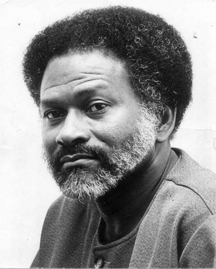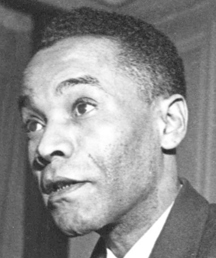The Guiana Shield is mostly defined in geographical and geological terms since its location, landscape, earth structure and vegetation are what define it. Its many other features present a varied and interesting mix. It is known for the vast extent of its Amazonian rainforests, savannahs, a geomorphology punctuated by gorges, rivers and waterfalls and geological roots that have produced several precious minerals and oil.
It is located on the northern edge of South America, touching the Caribbean coast at one point, and includes four countries and former colonies that give the Guiana Shield its name – known in the past as Spanish Guiana, British Guiana, Dutch Guiana and French Guiana. These are now the nations of Venezuela, Guyana, and Suriname, in addition to French Guiana which has maintained its name and status as a Department of France. Of these, only the last three are still referred to as the Guianas. Significantly, too, it is these three that stand out as culturally different from the rest of South America. They are the only non-‘Latin’ countries on the continent; they are the most multi-cultural and multi-lingual countries there, and most importantly, they are linked to the Caribbean rather than Latin America, in spite of the strong and increasing presence and influence of Brazil.
 It is no surprise, then, that these three have kept closer together, and have been cementing their Inter-Guiana relationships in sport and culture. The Inter-Guiana Games is more than 20 years old, and the cooperation in culture perhaps was forged after two Carifestas – Paramaribo in 2003 and Georgetown in 2008. Two years ago the Directors of Culture of these countries began regular meetings out of which the Annual Inter-Guianas Cultural Festival (IGCF) was established. The first was held in Suriname in August, 2011 and the second closes today after three closely packed days of activities in Guyana, August 24–27, 2012.
It is no surprise, then, that these three have kept closer together, and have been cementing their Inter-Guiana relationships in sport and culture. The Inter-Guiana Games is more than 20 years old, and the cooperation in culture perhaps was forged after two Carifestas – Paramaribo in 2003 and Georgetown in 2008. Two years ago the Directors of Culture of these countries began regular meetings out of which the Annual Inter-Guianas Cultural Festival (IGCF) was established. The first was held in Suriname in August, 2011 and the second closes today after three closely packed days of activities in Guyana, August 24–27, 2012.
This is really a mini-Carifesta of the Guianas, with the cultural expressions of the three non-Spanish, Caribbean-oriented members of the Guiana Shield. The various events are now in progress in Georgetown and include performances, exhibitions and workshops in theatre, storytelling, oral performance, literature, fashion, the fine arts, the culinary arts and a Symposium on the culture of the Guianas.

The cultures of the Guianas include an amazing cross-section of languages, ethnic groups, traditions and literatures. These often find their way into the performance traditions of the countries, particularly Suriname where there is the strongest reflection of the nation‘s many cultural traditions in theatrical performances, dance and music. Of the three Guianas, the cultural retentions among the different ethnic groups there are most pronounced, resulting from the history of immigration, slavery and marronage. Furthermore, the several languages have been retained along with the ethnicity. Apart from English and Dutch, there are African ‘nations’ arising from the maroon communities in the interior of the country, including the Ndyuka (also known as Aucan), Kwinti, Matawai and Saramakka. Then there are the Javanese and groups imported from that area in the Far East now known as Indonesia. The cultural and linguistic retentions among these peoples are very strong. There are Amerindians, Chinese, East Indians among whom Hindi-speaking communities still exist, and African descendants belonging to Paramaribo and the coast among whom the Creole Sraanan (Taki-Taki) is spoken.
Among the leading Surinamese writers is the fiction writer Cynthia McLeod, but a very legendary and recognisable representative of Surinamese literature is Robin Dobru. His work is preoccupied with identity and nationalism, and often makes reference to the different peoples and cultures. The description below is reproduced from an earlier publication (Creighton, Sunday Stabroek, Aug 10, 2008).

“Dobru is an assumed name used by Robin Ravales (Paramaribo, 1935-1983), and means ‘double R.’ During and after 1972 he became the most visible and representative Surinamese poet, whose fame spread across the region largely because of his performances in Carifesta. He was admired for the brand of performance poetry that was rapidly developing in the region in the 1970s, and his most popular piece was ik wil iemand haten vandaag (I want to hate somebody today). He also wrote in the national creole language of Suriname, a practice that had also gained much ground in the region at that time. This poem (reproduced here) variously titled Wan or Wan Bon (One Tree) or One, articulates the multilingual, multi-ethnic and multicultural nature of his native Suriname. But this also happens to be qualities that describe the whole Caribbean region.”
French Guiana shares some of these multi-cultural characteristics, although, as a Department of France, it is very much French and a member of the European Union. These two ethnic identities sometimes come into conflict politically and in the literature, and a leading critic, Bridget Jones, has pointed to two literary orientations – the French European heritage, and Negritude. Leon Damas (1912-1978) has been the most outstanding and most representative of the French Guianese writers. He was a poet, academic and French statesman, reputed to be a founder of Negritude along with Leopold Senghor (from Senegal) and Aime Cesaire (from Martinique).
His best known collections of poetry are Pigments and Black Label in which his main preoccupations have to do with colonialism, race prejudice, class attitudes, European versus indigenous culture and what these have to do with identity. One of his most famous poems, Hiccups, published in Pigments in 1937 reflects these concerns. Damas declared himself as a descendant from Europe and Africa, and from the four native rivers of French Guiana, thus rooting himself in the land itself.
These are poems of The Guianas.
Wan Bon
Wan
one tree
so many leaves
one tree
one river
so many creeks
all are going to one sea
one head
so many thoughts
thoughts among which one good one
must be
one God
so many ways of worshipping
but one Father
one Suriname
so many hair types
so many skin colours
so many tongues
one people
(Robin Dobru)
Hiccups
And in vain I swallow seven gulps of water
three to four times a day
my childhood returns to me
in a shaking hiccup
my instinct
like the cop the thug
Disaster
tell me about the disaster
tell me about it
My mother wanting a son with good table manners
Hands on the table
bread is not cut
bread is broken
bread is not wasted
bread of God
bread of the sweat of your Father’s brow
bread of bread
A bone is eaten deliberately and discreetly
a stomach should be polite
and no polite stomach
burps
a fork is not a toothpick
do not blow your nose
openly
in public
and then sit up straight
a well brought-up nose
does not wipe a plate clean
And then and then
and then in the name of the Father
of the Son
of the Holy Ghost
at the end of every meal
And then and then
and then disaster
tell me about the disaster
tell me about it
My mother wanting a noteworthy son
Shut up
Did I or did I not tell you that you must speak French
the French of France
the French of the French
the French French
the mulattos do not do that
leave it to the negres
(Leon Damas)




